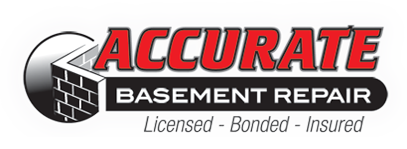BACKFILL Material used for refilling an excavation.
BASEMENT INSPECTOR/ENGINEER Individual whose expertise lies in independent, unbiased foundation inspection and analysis.
BLEEDERS A valve or opening for draining a tank, tube, etc,; concrete, clay or plastic pipe that is installed through the footing or foundation wall to allow transfer of water from the exterior drain tile to the interior drain tile.
DRAIN TILE Concrete or plastic perforated pipe used underground to collect water and direct it to the sump crock.
EFFLORESCENCE (SCALE STAINS) White chalk-like mineral deposits showing on basement walls due to water seeping through the basement walls to the dry surface.
EGRESS WINDOW A window that is large enough for a person to exit or enter through, usually in the case of an emergency.
EPOXY (EPOXY RESIN) Injectable material used to repair cracks in concrete or masonry and when cured forms a very strong bond with the base material.
EXCAVATION Digging out soil, clay, rocks, etc.
GRADE The level at which the ground intersects the foundation of a building.
HOME INSPECTOR A trained and certified individual who performs a non-invasive examination of the home, looking at things like the roof, basement, heating/cooling system, structure, plumbing and electrical systems.
HYDROSTATIC PRESSURE Water pushing against the sides and bottom of a basement floor; hydrostatic pressure is controlled by a drain tile system.
MUDJACKING The process of pumping a slurry (usually a water and soil/cement mix) under the slab in order to cause the slab to lift.
PALMER VALVE A valve located in your basement floor drain that opens to allow water to flow out of your drain tile system to prevent sewage back up into your drain tile system.
PILASTER A protrusion, usually found on the inside face of longer walls, made out of cement block, to increase the strength of the wall.
PITCH The degree of inclination or slope.
SEEPAGE Water coming through walls or floors.
SPUD PIPE A steel pipe that is driven into the soil around the perimeter of the home; water is injected into the soil through the pipe, to test the drain tile system.
STEEL RESTRAINTS (BEAMS) Wall reinforcement method to prevent further movement of the basement walls.
SUMP CROCK The collection point where water from your drain tile system drains – like a large bucket in your basement floor.
SUMP PUMP A pump located in the sump crock that removes collected water from the drain tile system to the exterior of the property.
TUCKPOINTING Technique of finishing masonry joints with a fine, pointed ridge of mortar.
WALL DEFLECTION The amount of horizontal movement in a basement wall at any given point, with respect to its vertical plane.


